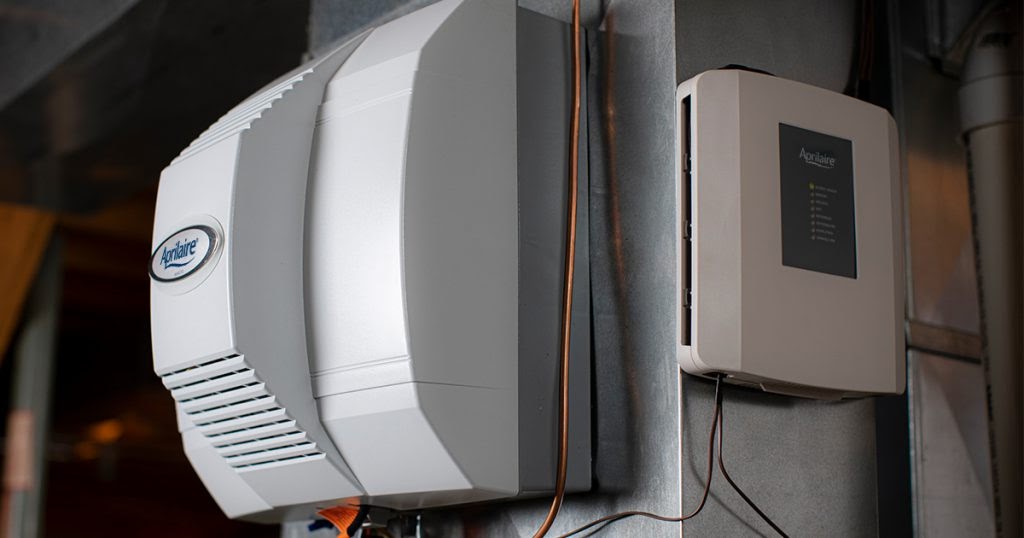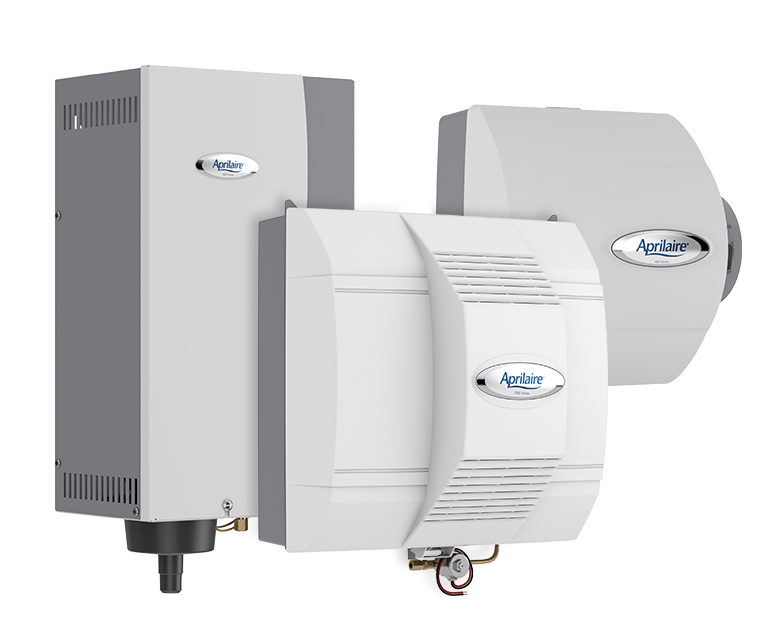Don’t compromise between warmth and comfort. Discover how whole home humidifiers can alleviate you and your family from the effects of dry air, which can result in the colder seasons from a standard home heating system. In this blog we’ll go over everything you need to know about how a whole home humidifier added to your central HVAC system can help you save energy and maximize your home's comfort by controlling your indoor humidity.
Why do I need a whole home humidifier?
During the winter when you start up your furnace or heating unit, your house's air begins getting warmer and drier. Side effects on dry air in homes are:
- Dry skin & irritation
- Exacerbate respiratory illnesses
- Damage to wood furniture and flooring
- Increased static electricity
Installing a whole home humidifier can help alleviate your home of all of this.
How humid should my home be?
The recommended humidity range for your home and health is 35-50%.

How do whole home humidifiers work?
Humidifiers add humidity throughout your home by directly connecting to your heating system and adding a controlled amount of moisture to your home's air. Yes, the amount of humidity in the air can be monitored and controlled through a device that measures the moisture in the air called a humidistat. Adding moisture to your air will positively impact your health, helping clear your sinuses, moisturize your nasal passages, and improve your breathing.
Do I need a whole home humidifier?
If you’ve noticed the following issues while your home’s heating system is on then a whole home humidifier may be right for you and can help alleviate your home's dry atmosphere.
- Dry skin or itchy eyes
- Nosebleeds
- Sore or scratchy throat
- Increased static electricity
- Dry hardwood floors, warped wood cabinets or paint cracks
What are the benefits of having a whole home humidifier?
- Increases moisture
- Helps your home feel warmer at a lower temperature, lowering energy bill
- Alleviate dry skin, lips and nasal passages
- Help protect wood furniture, cabinets and floors
- Reduces airborne dust
- Keeps house plants healthy

What types of whole home humidifiers are there?
There are three types of whole house humidifiers to choose from, this includes:
- Bypass Humidifiers which use water from the plumbing system mixed with warm air from the heat duct.
- Fan-powered Humidifiers can work without a furnace by using its own fan to move air.
- Steam Humidifiers are individual units that use a water tank to release steam to its general area.
How do I install and choose a whole home humidifier?
Partnering with a dedicated HVAC contractor such as a nearby Ruud Pro Partner will help ensure that your new whole home humidifier will be effective in your house and work properly. Whether you need financing for your whole home humidifier or help finding the right whole home humidifier, we’re here to help.
We’ll help outline the full installation process which includes the following steps:
- Deciding where you're going to install your new humidifier.
- Cutting a hole into your ductwork.
- Mounting the humidifier casing and control body.
- Installing a 6" take off on your supply duct.
- Installing bypass piping.
- Installing your drain piping.
- Turning off power and connecting to your transformer.
- Running the thermostat wiring.
- Installing the water line and valve.
- Re-installing your water feed tube, panel and humidistat cover.
- Lastly we’ll go over how to use and maintain your new humidifier.



